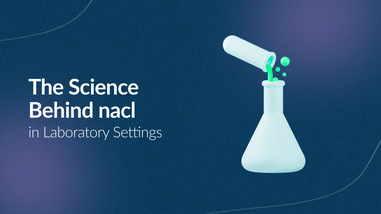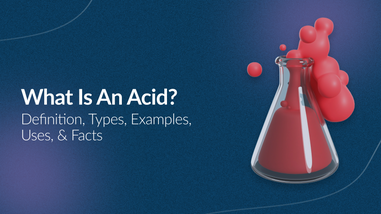- No products in the cart.
Overview
Hydrogen peroxide, the simplest peroxide, is a commonly used inorganic chemical. An oxidizer that breaks down to just oxygen and water, is popular from high-tech to household.
Although Hydrogen Peroxide’s predominant use is in the pulp and paper industry, it can be used to manufacture chemicals, personal care products, pharmaceuticals and even rocket propellant. Hydrogen Peroxide is essential for etching and cleaning semiconductors.
Hydrogen peroxide is diluted to a plethora of purities and strengths. Being reactive, it often contains stabilizers. Selecting the correct concentration and grade will help optimize your process.
Why should I use 30-35% Hydrogen Peroxide and what is the difference?
In the 30-35% range, Hydrogen Peroxide is a strong oxidizing and reducing agent that is used for disinfecting, cleaning, and chemical processes. Since Gram-negative bacteria and spores have been shown to tolerate low dosing, high concentration can improve sanitation [1, 2]. High strength and low water content can be compulsory for efficiently etching semiconductor wafers and for processing and packaging in the food industry.
Although there is only a 5% difference between 30% and 35% Hydrogen Peroxide, the higher concentration is more reactive and corrosive.
30% Hydrogen Peroxide
30% (by weight) Hydrogen Peroxide is commonly used in labs. Per Raoult’s Law, this is its ideal solution at 30oC. At higher concentrations it can self-concentrate, becoming unstable and eventually explosive. Exposed to air, Hydrogen Peroxide reacts to form water. Light, heat, and transition metals like iron also accelerate its decomposition. Stored appropriately, 30% Hydrogen Peroxide purportedly has a shelf life of about 1-3 years.

Semiconductor Grade Hydrogen Peroxide
Although sometimes containing a light stannous stabilizer, semiconductor grade Hydrogen Peroxide is 99.999%+ pure with ultrapure grades being stabilizer-free and having cation impurities in the low ppb-ppt ranges. [Refer to SEMI standard C30-1110to see the five semiconductor grades].
Since 30% semiconductor grade Hydrogen Peroxide has been the gold standard for electronics manufacturing for years, many preparations, test methods and equipment standards were developed around its use. From RCA cleaning with CMP slurries of ammonia or HCl to film removal with Piranha solution, it can be used without worry of heavy metal contamination. Using Hydrogen Peroxide 30% can be critical for safely preparing solutions. Bio contamination equipment might also require high quality Hydrogen Peroxide 30% .
Due to the need for smaller and smaller microchips, 30% ultrapure semiconductor grade Hydrogen Peroxide may be required for use in oxidant gas converters to perform ALD, annealing, and interface layer passivation. Using any other concentration or grade could cause irreversible damage to expensive equipment. Ultratrace analyses also requires ultrapure Hydrogen Peroxide.
35% Hydrogen Peroxide
35% Hydrogen Peroxide might be used by commercial establishments that dilute to 3%. Alternately a winemaker might use it to neutralize sulfites. A food manufacturer may purchase Hydrogen Peroxide 35% for food processing and aseptic packaging. PCB copper etching might also be a use.
Safety Considerations
Since both grades are oxidizing liquids and are harmful if swallowed, inhaled, or touched, special care must be taken to ensure safe use. Gloves, goggles, face shield and even a gas mask might be recommended, so only experts should handle. Given the special storage conditions of concentrated Hydrogen Peroxide, including explosion hazard, it should only be stored per SDS instructions in vented containers made of glass, stainless steel, aluminum or plastic and in non-combustible storage areas.
Conclusion
30% and 35% Hydrogen Peroxide solutions have many applications. Lab Pro having serviced the electronics industry for many years, offers high quality 30% semiconductor grade Hydrogen Peroxide solutions you can trust. Always consult the Safety Data Sheet (SDS) when using any chemical including Hydrogen Peroxide. SDS-s can be obtained from the manufacturer and distributor.
For over 40 years, Lab Pro has been committed to delivering a complete chemical inventory including Hydrogen Peroxide for laboratories worldwide. Come visit the biggest Lab Supply showroom in California, or contact us online or at 888-452-2776.
Disclaimer
The Blogs published on LabProInc.com are for resource information only. Always consult the Safety Data Sheet (SDS) when using any chemical including Hydrogen Peroxide. SDS-s can be obtained from the manufacturer and distributor.
References:
1 McDonnell, G; Russell, AD (January 1999). "Antiseptics and disinfectants: activity, action, and resistance". Clinical Microbiology Reviews. 12 (1): 147–79. doi:10.1128/cmr.12.1.147. PMC 88911. PMID 9880479.
2 Block, Seymour S., ed. (2000). "Chapter 27: Chemical Sporicidal and Sporostatic Agents". Disinfection, sterilization, and preservation (5th ed.). Philadelphia: Lea & Febiger. pp. 529–543. ISBN 978-0-683-30740-5












































